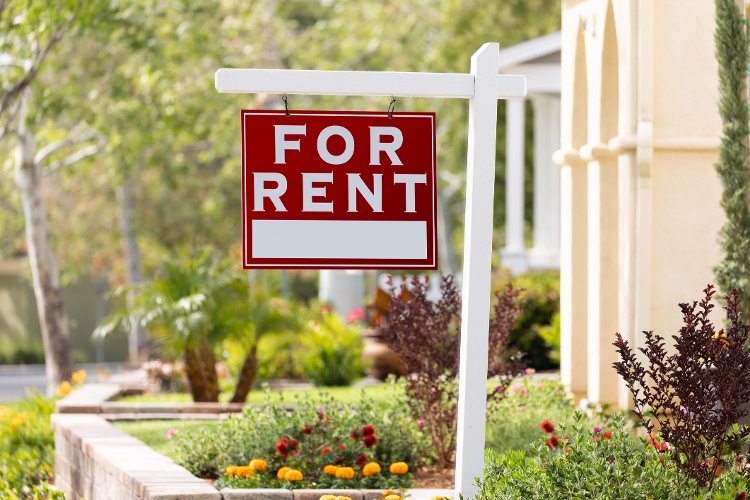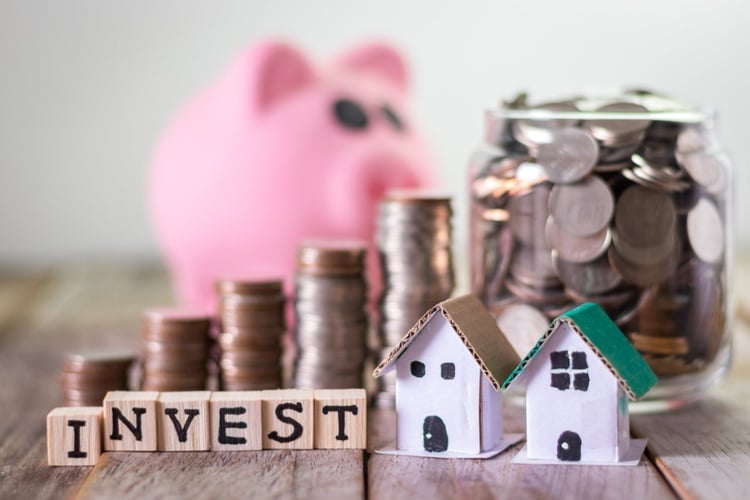Many people today have built up quite a bit of savings by investing in the stock market over the last few years. However, with the way things are going, keeping so much money in stocks, bonds, mutual funds and ETFs may not be the best investment decision going forward.
Although $100,000 may not sound like a lot of money to invest in real estate, it can go a surprisingly long way when you use the right strategies and techniques.
In this article we’ll explore the different ways to invest $100K in real estate and explain the unique financial benefits that income-producing property provides.
8 Reasons Why Real Estate is a Great Way to Invest $100K
Out of all the different assets you could choose to invest $100,000, real estate stands head and shoulders above other assets for several reasons:
- Dual revenue streams of monthly rent payments and longer-term appreciation
- Easy to find, analyze, manage, and sell when the market is in your favor
- Leverage makes it easy to turn $100K into five rental properties or more
- Market rents generally go up over time, often more than the cost of living, making rental real estate an excellent hedge against inflation.
- Specific investment strategies and tactics to match your desired balance of risk and reward
- Unique tax benefits such as depreciation expense to reduce taxable income and Section 1031 exchange to defer payment of capital gains tax
- Low correlation between real estate and the stock markets makes real property a good way to avoid the sudden gyrations in the equity markets
- Using a self-directed IRA to invest in real estate allows you to take boost the returns on your retirement account by taking control of the exact assets you put your savings in.

Real Estate Investing: Active vs. Passive
When you invest in real estate, you can be active, passive, or even a little bit of both.
Active investing
Actively investing in real estate means scouting out your own deals or working with a real estate agent, managing the property and dealing with vendors and tenants, and paying the bills at the end of each month.
Being an active real estate investor is a good way to learn the business but is also a very difficult way to grow a rental property portfolio and diversify geographically with long-distance real estate investing.
Passive investing
Passive real estate investors use their capital to purchase income-producing real estate while turning the day-to-day operations over to an experienced professional with experience in the local marketplace.
Passive investing is a more hands-off way of learning the business. It’s the route that most investors take because it requires less time, generates potentially higher returns and is also a more cost-effective (and time-effective) strategy to invest in real estate. Everyone wants passive income, right?

Options for Investing $100K in Real Estate
The options you choose for investing $100,000 in real estate depend on whether you’re an active or passive investor and the amount of risk you’re willing to take in exchange for a potentially over sized reward.
1. Wholesaling
Real estate wholesalers make money by searching for a distressed property seller, putting the property under contract, then assigning the contract to another investor in exchange for a wholesale fee. Wholesalers can lose money if they make a mistake estimating the amount of repair work needed or the true market value of the property.
2. Fixing-and-flipping
Time, experience, money, and a lot of luck are some of the key factors that determine how successful a property flipper will be. Unlike a real estate wholesaler, fix-and-flippers close escrow on the property, make all of the needed repairs as quickly as possible, then sell the property for a profit to another investor or an owner occupant.
3. Single-family houses
Houses are the most common type of real estate in the U.S. They’re easy to find, easy to rent out and manage, and easy to sell when the time is right. However, one of the biggest challenges in investing in single-family houses is determining what the true fair market rent is.
You can use the free rental property analyzer in this article to forecast the potential return of a property. Simply enter some information to view projected key return on investment (ROI) metrics, including cash flow, cash-on-cash return, net operating income, and cap rate.
4. Multifamily
Small multi-family rental properties such as duplexes, triplexes, and fourplexes are attractive investments for several reasons. Investing in multi-family real estate is an easy way to quickly grow cash flow because each property has more than one unit or door. They’re also easy to manage and maintain because there are several tenants at the same address.
Depending on the market and the neighborhood, multi-family property is a good match if you’re looking for workforce housing to rent to stable tenants such as police, firefighters, teachers, government workers, and people employed in the service industries.

5. Turnkey rental property
There are two types of turnkey rental property:
- Places that are completely updated and waiting for a new tenant
- Rental property already leased to a tenant
The second option is the best choice for real estate investors. That’s because turnkey rental property with a tenant in place allows you to hit the ground running with cash flowing on the day you close escrow.
Up until a few years ago, locating turnkey rental property with a qualified tenant was like looking for a needle in a haystack.
Fast forward to today, and you can use the Roofstock Investment Property Marketplace to find turnkey single-family rental houses and small multi-family property and generate a complete financial analysis and pro formas for free in just a few easy steps.
Alternative Ways to Invest in Real Estate
Turnkey rental property, multi-family, single-family, fix-and-flip, and wholesaling are the five most popular ways to invest $100,000. If you’re a more experienced real estate investor looking for additional ways to diversify your investments, there are a few more options to consider:
- Group investing: Real estate partnership and joint ventures let you contribute capital and act as a silent partner with other members handling the daily details of the investment.
- Crowdfunding: When a large number of investors get together to contribute capital, the result is a crowdfund. Investing part of your capital in a real estate crowdfund is a good way to diversify and gain access to large commercial investments such as Class A office buildings, shopping centers, and large apartment projects.
- REITs: Real Estate Investment Trusts can be private, or publicly traded on the major stock exchanges. REIT investments can be broad-based, with a focus on residential or commercial asset classes, or concentrate on a specific specialty sector such as movie theaters or antenna sites for wireless communications. Publicly traded REITs are also the most liquid way to invest in real estate, since shares can be easily bought and sold.
- Portfolio investing: Using $100K to buy a group of properties using conservative leverage is a great way to scale up your rental property portfolio fast, especially if you’re looking for replacement property to use in a 1031 tax-deferred exchange.
- Private money lending: In addition to investing in equity by owning real estate directly, some investors also act as lenders or purchase debt notes and deeds of trust. Private and hard money lending can be risky if you don’t have the experience. However, if you ask around at your next real estate investors club meeting, you can find experienced lenders who will let you participate in deals in exchange for part of the monthly interest payment from the borrower.

Risk vs. Reward
Buy-and-hold real estate investors who own property for five years or more usually generate a higher ROI (return on investment) due to the compound real estate investing benefits of rental income and gradual appreciation in market value.
Generally speaking, the longer the time period that real estate is the less risk there will be from normal cyclical upward or downward market trends. Good choices for holding property over the long-term include value-add Class B property, workforce housing, and ‘cash cow’ Class C rentals that may not appreciate much over time but generate solid amounts of cash flow.
On the other hand, investors with a high tolerance for risk focus on short-term gains. But, while the idea of making tens of thousands of dollars in a short period of time may seem attractive, there’s also a tremendous amount of downside potential that comes from trying to time the market.
Granted, every real estate investor is different. If investing in short-term deals sounds interesting, you can always allocate a small percentage of your investment capital to higher-risk opportunities while keeping most of your money in longer-term investments with a better balance between risk and reward.
Takeaway Tips
Before you invest $100K in real estate – or anything else, for that matter – it’s important to do a few important things first:
- Pay off as much debt as possible, especially high-interest credit cards and other revolving debt. Many people today have multiple credit cards. If you do too, consider consolidating what you owe by transferring the balance onto a single card with an introductory 0% APR.
- Set aside money for a rainy day: Create an emergency fund for personal expenses and a capital reserve account for each real estate property you invest in. That way, you’ll have funds available when and if you need them without having to scramble to the bank for a loan or run up the balance on the credit cards you just paid off.
- Decide what kind of investor you are and the balance between risk and reward: Active vs. passive investors, short-term fix-and-flip vs. long-term buy-and-hold, turnkey single-family houses and small multi-family property vs. private money lending.









